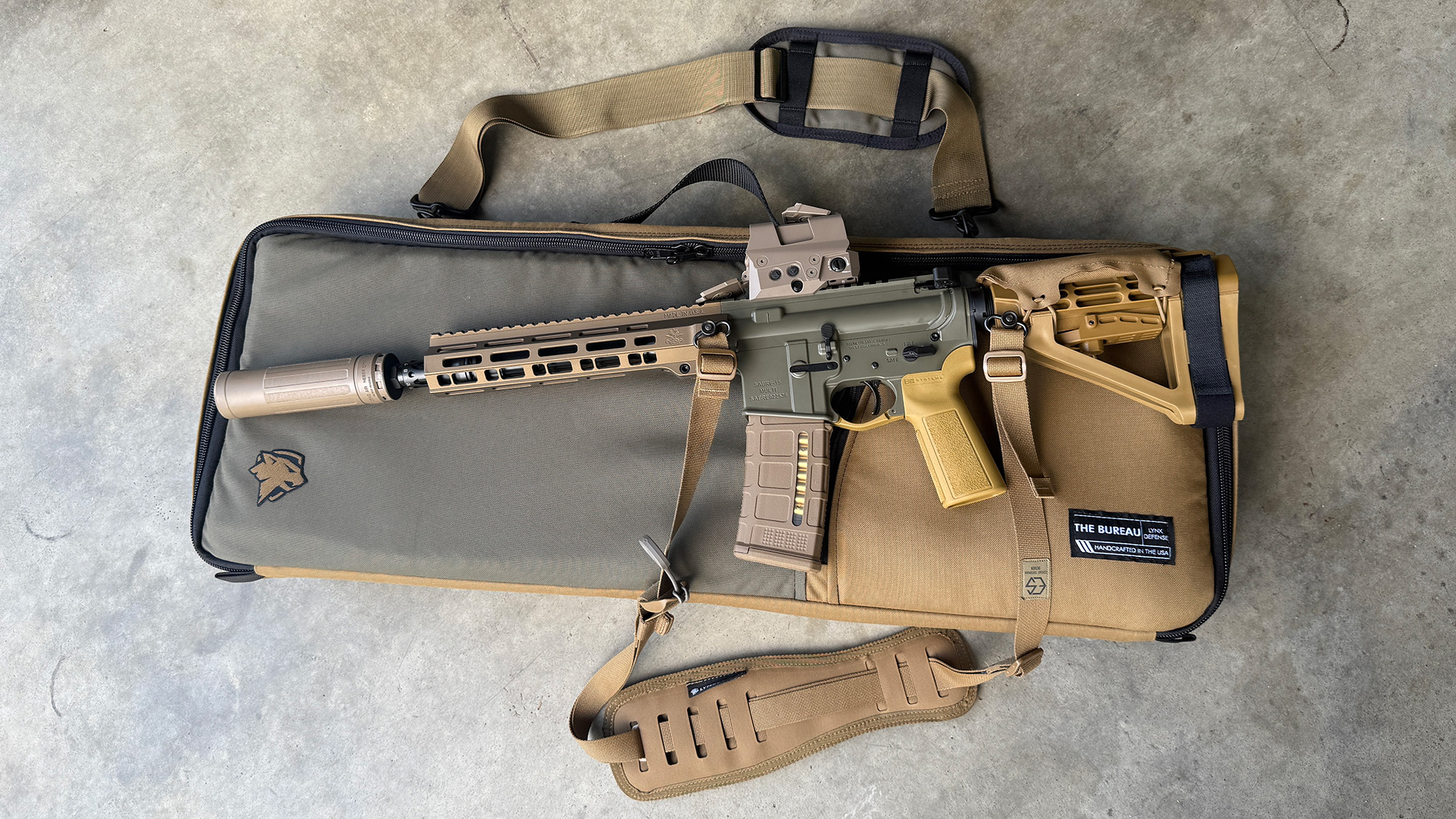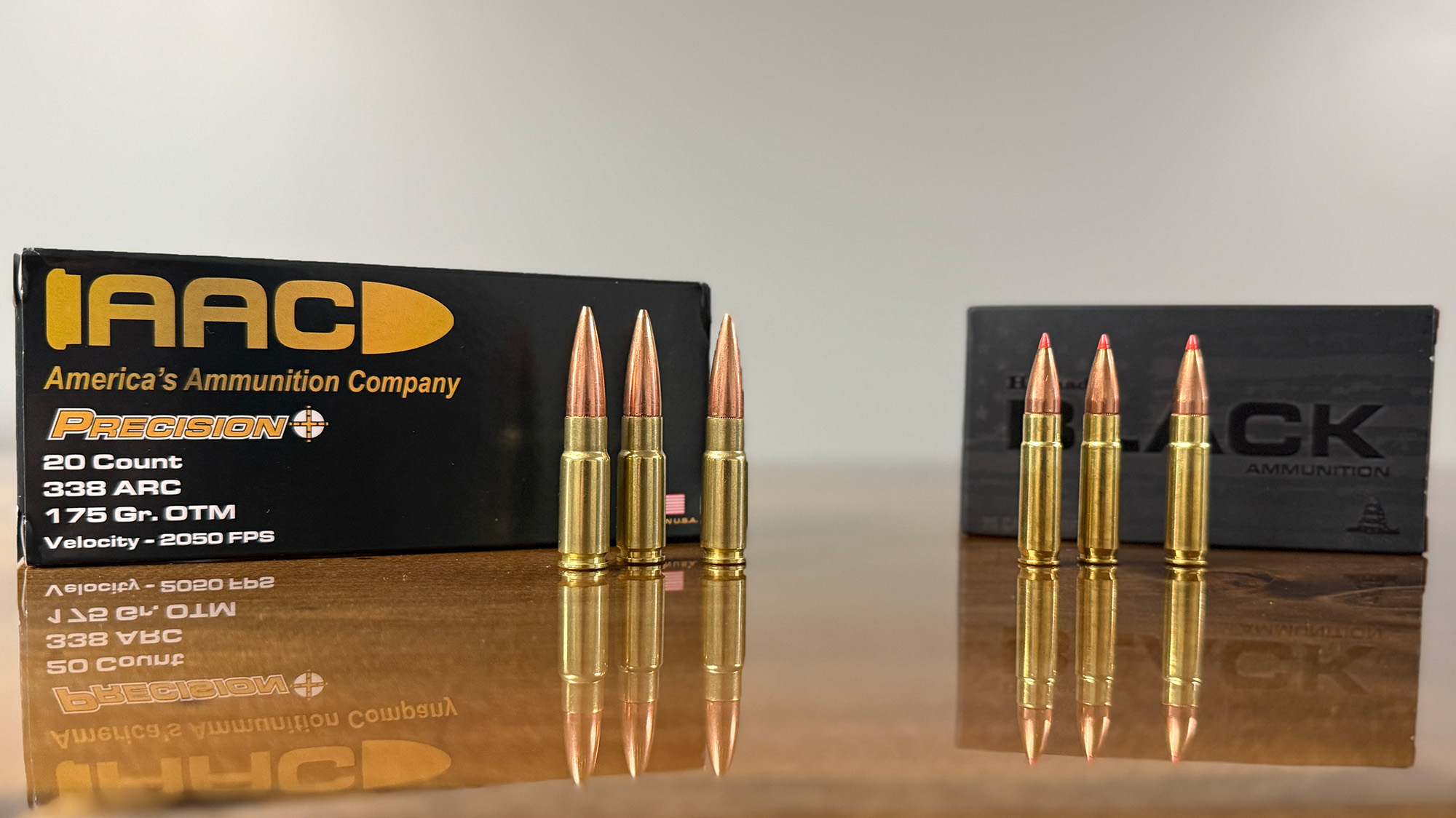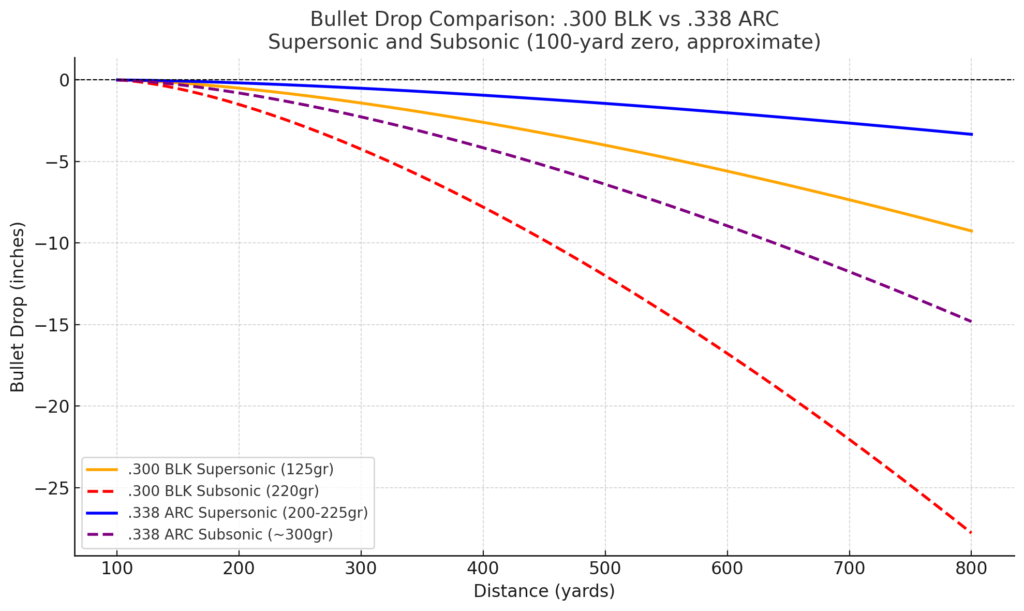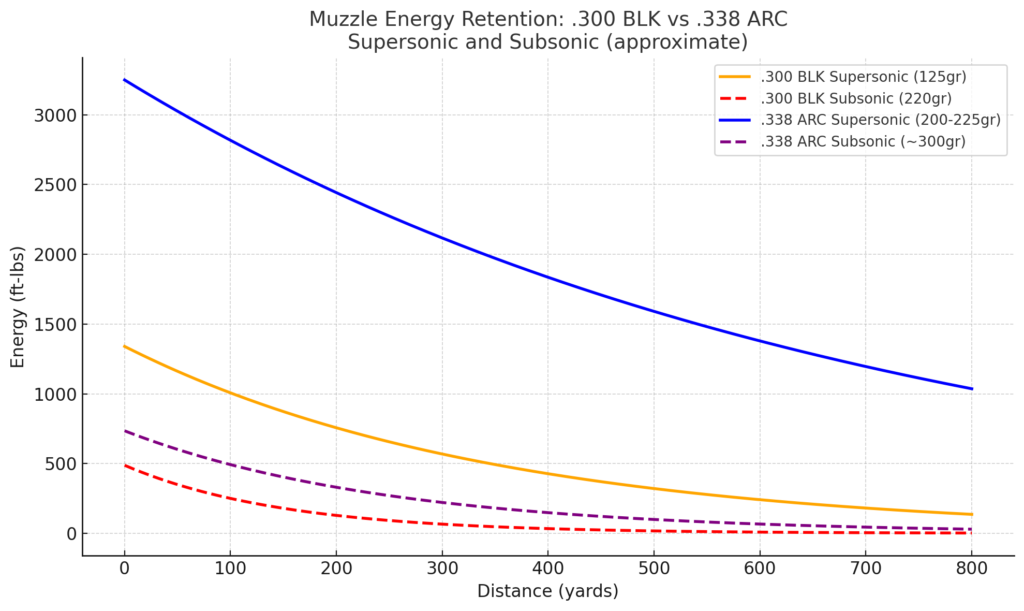
Ready to see what we have coming?
Lynx Defense will release some new things soon. Let us deliver them right to your inbox!

Lynx Defense will release some new things soon. Let us deliver them right to your inbox!
We may earn revenue from product links on this page and participate in affiliate programs. Learn More ›

When people discuss modern AR-15 cartridges, two calibers that come up are the .300 Blackout and the .338 ARC. They both fit in the AR-15 platform, but that’s where the similarities end.
These two cartridges were created with entirely different goals in mind, and understanding those goals makes the comparison much clearer.
The .300 Blackout was introduced in the early 2010s by Advanced Armament Corp. Its mission was simple: take the standard AR-15 and give it .30-caliber punch without losing magazine capacity or requiring exotic parts. The result was a cartridge that excels in short barrels and really comes alive when suppressed.
The .338 ARC, on the other hand, came from Hornady in 2020. Instead of optimizing for short barrels and close quarters, Hornady wanted a round that could push the AR-15 into .308 Winchester territory without stepping up to the larger AR-10. By using the 6.5 Grendel case as a parent and necking it up to .338, they built a cartridge designed around long-range precision and serious downrange energy.
Ballistics is where these two cartridges really separate. The .300 Blackout is versatile, but it’s clearly a short-range tool. With supersonic loads in the 110–150 grain range, it runs between 1,900 and 2,300 feet per second, generating a little over 1,200 foot-pounds of energy at the muzzle.
That’s perfectly respectable for a defensive rifle or short-range hunting, but it falls off quickly beyond 300 yards. Subsonic loads, usually 190–220 grains at about 1,000 fps, make the .300 BLK king of suppressed shooting but keep it firmly in the close-range category.

The .338 ARC lives in a different league. Running 200–225 grain bullets at 2,400–2,700 fps, it produces over 2,400 foot-pounds of muzzle energy—roughly double what the .300 BLK delivers.
More importantly, it holds that energy much farther downrange, staying effective well past 600 yards and stretching comfortably to 800 in the right hands.
One of the biggest selling points of the .300 Blackout is how simple it is to run. If you already have an AR-15, all you need is a new barrel.
Standard bolts and magazines work just fine, which is a big reason why the cartridge became so popular. It thrives in short-barreled rifles and AR pistols, and when paired with a suppressor it’s hard to beat for versatility.
The .338 ARC requires a little more effort. You’ll need a bolt and magazines designed for the 6.5 Grendel, since that’s its parent case.
It also performs best in longer barrels—16 to 20 inches is the sweet spot—so it’s not nearly as compact as a .300 BLK build. What you get in return, though, is a rifle that shoots flatter and hits harder than anything else you can chamber in an AR-15.

So which one should you choose? It depends on the job. The .300 Blackout shines in home defense, CQB, and tactical setups where suppressed fire matters. It’s also a fun and practical round for anyone who wants a compact rifle with more punch than 5.56.
The .338 ARC is aimed at hunters and marksmen. With its high energy and long reach, it’s more than capable of taking medium and large game. It’s also an excellent choice for a designated marksman role, where you need precision and stopping power well past the distance where .300 BLK drops out.
The .300 Blackout and .338 ARC don’t compete with each other—they complement different needs. One is a short-range specialist built around suppressed fire and compact platforms. The other is a powerhouse designed to give the AR-15 true long-range capability.
If your goal is a quiet, handy rifle for defense or close work, the .300 BLK is tough to beat. But if you want to push an AR-15 into hunting or precision roles where distance and energy matter, the .338 ARC stands alone.
| Feature | .300 Blackout | .338 ARC |
|---|---|---|
| Bullet Weight | 110–150 gr (supersonic), 190–220 gr (subsonic) | 200–225 gr |
| Velocity | 1,900–2,300 fps (supersonic), ~1,000 fps (subsonic) | 2,400–2,700 fps |
| Muzzle Energy | 500–1,400 ft-lbs | 2,200–2,600 ft-lbs |
| Effective Range | 100–300 yards | 600–800+ yards |
| Best Platform | Short barrels, suppressed builds | 16–20″ rifles, precision builds |
| Primary Role | CQB, home defense, suppressed fire | Hunting, long-range marksman |
Concealed Carry Insurance
Protect yourself and all those who carry concealed in your house.